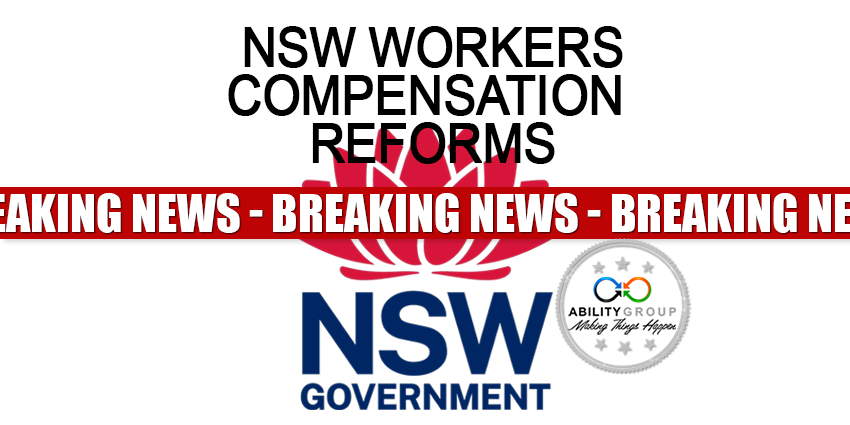
by ABILITY GROUP | Nov 24, 2025 | Breaking News, Claims, Consulting, Injured Worker, Our team, Reforms
NSW has finally enacted significant NSW Workers Compensation Reforms, the most notable in over a decade, with the Workers Compensation Legislation Amendment Bill 2025, which received Royal Assent on 24 November 2025. These reforms introduce tighter definitions and objective tests for psychological injuries, including bullying, excessive work demands, racial and sexual harassment, and establish a clear framework distinguishing between primary and secondary psychological injuries. The reforms also streamline Whole Person Impairment (WPI) assessments to a single principal assessment by an approved medical expert, replacing dual assessments.
(more…)

by Marc Ring | Oct 28, 2025 | Premium, Reforms, Workers Compensation
Important Update: Changes to Late Payment Fee Waiver Process for Workers Compensation Policies. In line with recent regulatory updates, ABILITY GROUP is advising all employers and brokers of a significant change to the process for requesting late payment fee waivers and write-offs for Workers Compensation policies in NSW.
(more…)

by Marc Ring | May 27, 2025 | Reforms, Workers Compensation
The NSW Government has introduced significant NSW workers compensation reforms, aiming to modernise protections for employees while ensuring sustainability for businesses. We summarise NSW Government’s key workers compensation Protecting Workers Compensation for Future Generations changes and how they will directly impact employers, insurers, and workers across the state. and importantly highlight What It Means for Your Business.
(more…)

by ABILITY GROUP | May 18, 2025 | Claim management, Claims, Injured Worker, Injury Management, Premium, Reforms, Workers Compensation
As summer approaches, it’s time to review and renew your policies. June marks a critical period for policyholders, and we’re here to ensure your coverage continues seamlessly, whether you’re renewing a business insurance plan, updating your health coverage, or reviewing your property protection.
(more…)

by Marc Ring | Apr 29, 2025 | Reforms, Workers Compensation
The NSW workers’ compensation scheme is facing significant financial challenges, with projections indicating it may only remain sustainable for another two years without substantial reforms. This situation has serious implications for employers, as potential changes could affect insurance premiums, claims processes, and overall compliance requirements.
(more…)

by Marc Ring | Apr 14, 2025 | Reforms, Workers Compensation
The Victorian Government has introduced the Workplace Injury Rehabilitation and Compensation Amendment Bill 2025, aiming to enhance the fairness and quality of Victoria’s workers compensation system. Introduced to Parliament on 4 March 2025, Victorian Regulation changes relate to return to work coordinator obligations and an increase in child pension. We outline the key changes and their implications for businesses…?
(more…)





